Cannibal feast
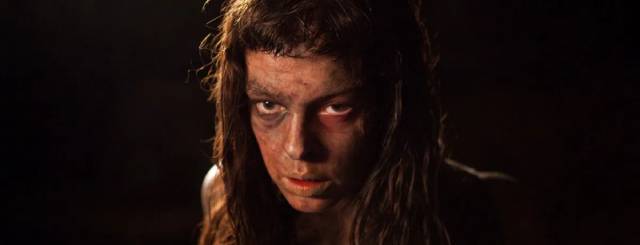
It’s interesting that things which on the surface seem very similar can elicit very different responses. The fact that I experience this myself doesn’t make it any easier to explain. For instance, there’s a lot of crossover between zombie and cannibal movies; the most obvious connection is that both genres involve characters who find themselves under threat of being eaten by monsters. Both also indulge in very graphic displays of violence and explicit gore. And yet zombie movies (and television shows) are hugely popular entertainment, while cannibal movies remain a disturbing niche phenomenon. What’s the big difference? Zombies are mindless monsters, while cannibals are people who remain similar to their victims while practising behaviours which, through social norms largely subscribed to by the audience watching the mayhem, are repellent. In zombie stories the fear is not simply that you might be ripped apart and eaten by the monsters; there’s a very good chance you will become one of them yourself. That is, it’s likely you will live on as a monster doing horrifying things. In cannibal movies, that form of continued existence is precluded – being killed and eaten is nothing more than a complete negation of personal identity.
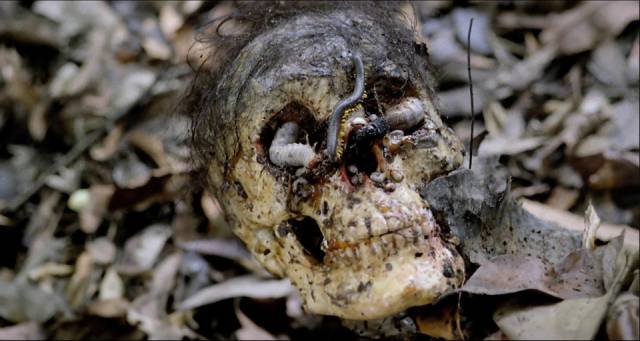
Actually, cannibal movies themselves fall into two fairly distinct types – the North American, which blends zombie-like tropes with serial killer elements, producing movies like The Texas Chain Saw Massacre, The Hills Have Eyes, Ravenous; and the Italian, which blend a (pseudo)-anthropological approach with extreme gore and genuine animal violence to create an air of faux documentary realism. The American movies are firmly rooted in the horror genre; the Italian are something else again, frequently much more disturbing and much less conventionally entertaining.
I recently watched two Italian cannibal movies (one a repeat viewing, the other for the first time) as well as three more recent American movies, two based on novels by Jack Ketchum and the third a sequel to those. They might as well have come from two entirely different cinematic universes.
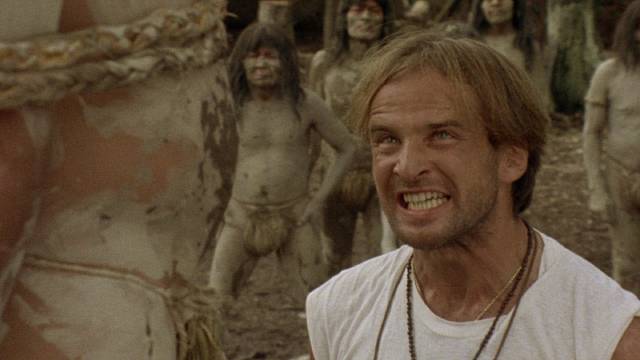
Mondo Cannibale
In Calum Waddell’s documentary Eaten Alive: The Rise and Fall of the Italian Cannibal Film (2015), included in Grindhouse Cinema’s deluxe Blu-ray set of Umberto Lenzi’s Cannibal Ferox (1981), Lenzi and Ruggero Deodato reiterate their long-running dispute about which of them actually invented the genre. Lenzi’s claim rests on his movie The Man from Deep River (1972), which introduced some of the tropes as peripheral details in what was essentially a remake of A Man Called Horse (1970). The success of that movie inspired producers to go all in on the supposed cannibal tendencies of primitive tribes, but Lenzi declined to make a follow-up and Deodato was recruited for what became Last Cannibal World (1977). The success of that in turn put pressure on Deodato to top himself, resulting in the one masterpiece of the genre, Cannibal Holocaust (1980), dubbed by Tim Lucas and others “the Citizen Kane of cannibal films”. The international success of that in turn brought Lenzi back for a double assault on audience tolerance with Eaten Alive! (1980) and Cannibal Ferox (1981).
All of these movies had broad-stroke similarities: European or American characters travel to remote parts of the world which are harsh and hostile with natural threats and there they discover indigenous tribes which often have violent cultural practices and tend to eat their enemies. Interestingly, while the tribes are exploited for horrific effect, the intruders from the “civilized” world tend to be the villains, either stupid or actively malevolent, their arrogance and condescension bringing about their own mutilation and death. What makes Cannibal Holocaust stand out is that this aspect becomes the subject of the movie, embodied not just in the action but in the cinematic strategies Deodato uses to depict that action.
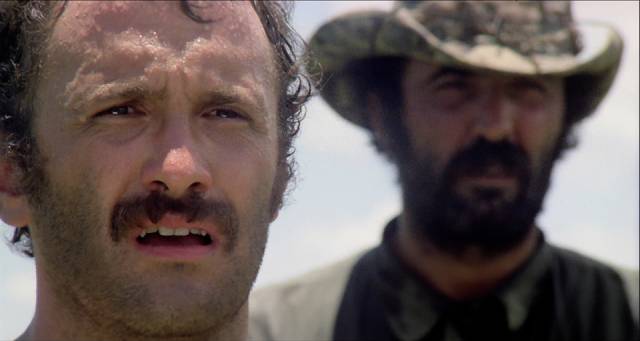
Cannibal Holocaust (Ruggero Deodato, 1980)
It’s generally acknowledged that Deodato initiated the found-footage genre with this film, but that aspect is embedded in a larger structure which serves to critique it at the same time that it exploits it. The first part of the movie, set in New York, deals with some television executives who call on a university professor (Robert Kerman) to help with a project. A young crew has disappeared into the Amazon and the execs want to send a search party to find out what happened to them. The professor is introduced to the crew’s work when he’s shown their previous documentary in the editing room – a series of atrocities filmed in Africa, firing squads, the aftermath of massacres … all very grim, but the producer informs him afterwards that it was mostly staged for shock effect.
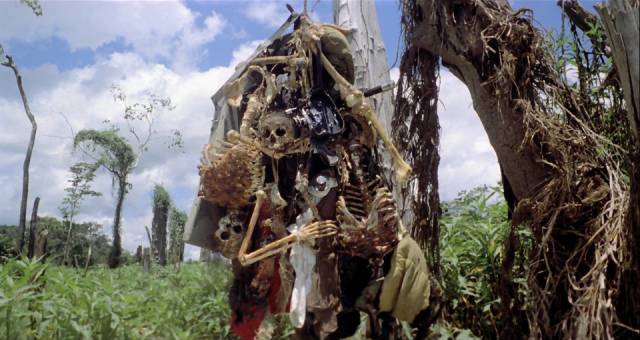
Here from the start we are introduced to the unreliability of what the camera shows, the ways in which images can be manipulated by filmmakers, whether for commercial or political purposes. Nonetheless, the professor agrees to join the expedition, following the crew’s tracks into uncharted wilderness. The deeper they go, the more indications they find of a dark fate for the crew. Eventually they reach a village whose population is extremely wary, even fearful of the new expedition. There are signs of destruction in the village which become more significant later.
Moving on, the expedition arrives at another village and here there are definite signs of cannibalism – and multiple film cans hung from trees like talismans. The professor and the rest of the team, in order to gain the trust of the tribe, have to eat human flesh themselves, and eventually make a trade for all the exposed film sealed in those cans.
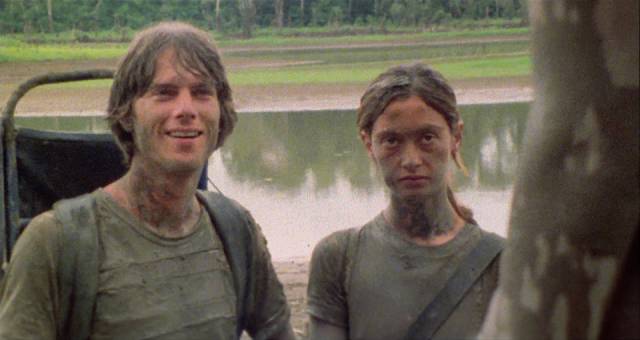
Back in New York, the film is processed and the professor views the footage. By this point, it’s widely known that the film crew died in the Amazon forest and interest in what they shot is high. The television execs are eager to put the material together and screen it … but after watching it, the professor urges them to bury it for good. The producer obviously doesn’t want to waste a big commercial opportunity, so she and her bosses join the professor in a screening room to watch the raw material. Here, the film switches from a largely objective perspective, shot on 35mm, and we see the much rougher 16mm material shot by the crew, the found-footage record in which they themselves feature as protagonists in a movie they’re inventing as they go along.
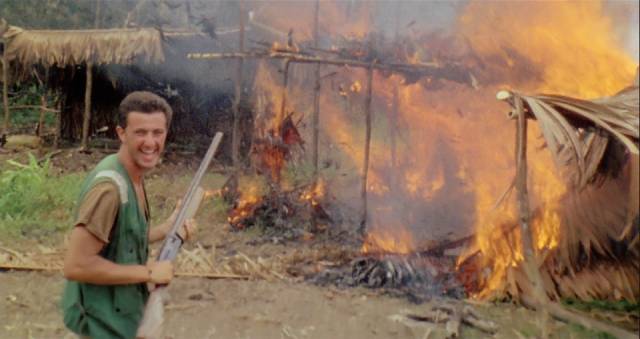
The crew – director (Perry Pirkanen), two cameramen (Luca Barbareschi, Carl Gabriel Yorke) and a woman who’s the director’s girlfriend (Francesca Ciardi) – are young and ambitious. They do what they do for the excitement, but mostly because they want to be famous and make money. They’re not so much interested in documenting unexplored territory as they are in documenting themselves discovering that territory. They are arrogant and increasingly obnoxious about their sense of their own superiority to the “primitives” they find. Although they do witness some horrific things, the farther they go the more they want to shoot something sensational.
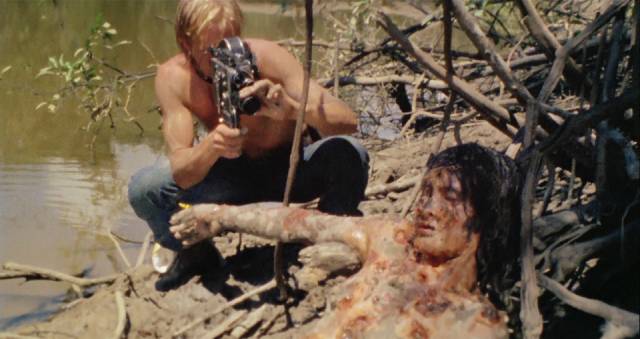
And so in the first village, they drive the people into a large hut and set fire to it, filming the terrified natives as they burn, a staged atrocity for which they intend to blame a rival tribe. They capture a young woman and keep filming as they take turns raping her, no longer even considering what purpose, even a fake one, the material can possibly have. The director’s girlfriend tries to stop them, but the men are intoxicated with the thrill of atrocity. Their identity as outsiders in this world, in their minds somehow protected by the technology they’ve brought with them, makes them feel invincible while reducing the people they encounter to nothing more than material to be filmed. Their madness even extends to them continuing to film as their illusion of magical protection collapses and they end up recording the horror of their own violent deaths.
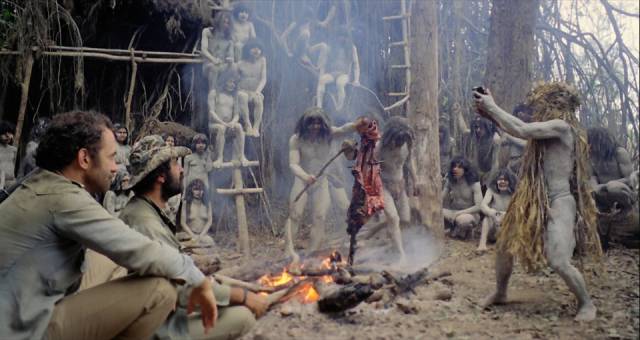
Appalled by what they have seen, the network execs agree with the professor that the material must be destroyed. The reasons for that decision are left for the viewer to decide. It’s certainly not because the network is averse to showing atrocities – the professor, after all, was introduced to the crew’s work via a relentless display of murder and brutality. Rather, their disgust seems to be rooted in an unwillingness to make public the monstrosity of bright young white people who were on their payroll … these horrors are acceptable when committed by the Other, specifically the racial Other. The crew have let the team down by exposing the rotten core of racial supremacy, the underpinnings of Western imperialism which has a deeply ingrained belief that people of colour, the primitive peoples who inhabit remote, undeveloped regions, are not fully human. There’s no way the network can show that to its complacent, thrill-seeking audience.
Which is not to say that Cannibal Holocaust – and the cannibal genre in general – is an expression of enlightened attitudes. In this, as in other representative movies, the indigenous peoples encountered and abused by “civilized” intruders are given little or no individual identity and their own behaviour, their social and religious practices, are in themselves often presented as monstrous. Much of the violence we see being perpetrated is directed at women, who are subjugated to men and punished in brutally sexualized ways. While Deodato offers a harsh critique of the white characters, the overall view of sheer human awfulness encompasses everyone, giving the film a numbing air of nihilism.
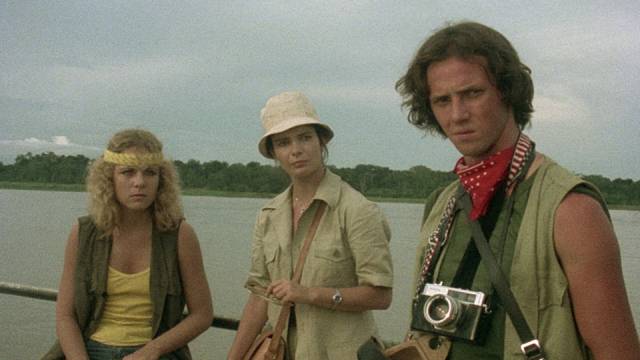
Cannibal Ferox (Umberto Lenzi, 1981)
Umberto Lenzi echoes that attitude to a degree in Cannibal Ferox, but he’s less ambitious than Deodato. The latter approached his film with the tools he had acquired from years as an assistant to Roberto Rossellini; much of the movie’s impact comes from the realism of his style. Lenzi more overtly comes at his movie with a commercial genre perspective. This is telegraphed from the start, again set in New York, by using crime movie tropes to set the story in motion. Beginning with a bifurcated narrative, Lenzi introduces a couple of gangsters looking for a man who has stolen money from them; after questioning a junkie, whom they kill, the police are on the case. Meanwhile, a doctoral student (Lorraine De Selle), her brother (Danilo Mattei) and a friend (Zora Kerova) head for the Amazon, part vacation, part research trip. The student intends to prove that cannibalism is a myth and the trio head deep into the rain forest in search of a village reputed to be inhabited by cannibals.
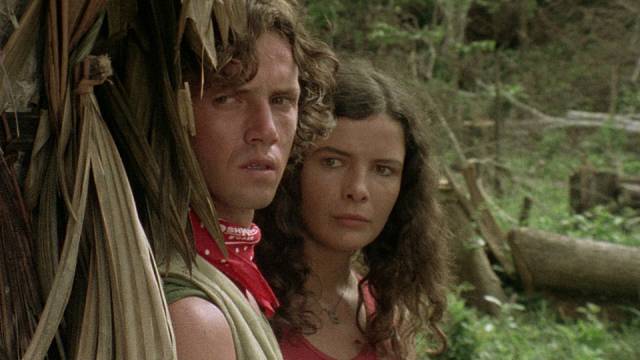
Lost in the wilderness, they encounter the runaway crook from New York (Giovanni Lombardo Radice), who is there with a friend (Walter Lucchini) looking for precious stones. The friend is badly wounded, and the crook tells a story about being attacked by savage natives. It inevitably turns out that the crook is the real savage, that he has brutalized the local tribe in his search for gems, that it was he in fact who wounded his partner. Things go from bad to worse and the student learns the hard way that her thesis is very wrong … and yet, in an oblique echo of the ending of Cannibal Holocaust, she gets her doctorate when she publishes a completely dishonest thesis which “proves” that cannibalism doesn’t exist, covering up the actual fate of her friends.
In both movies, the indigenous tribes are indeed portrayed as “savages”, but their actions are presented with a kind of anthropological detachment – as a simple matter of the cultural beliefs of Others – while the white interlopers are the villains because their violence, frequently attaining the level of atrocity, is a violation of supposed “civilized” norms; both films implicitly make a moral distinction even though both sides commit appalling acts.
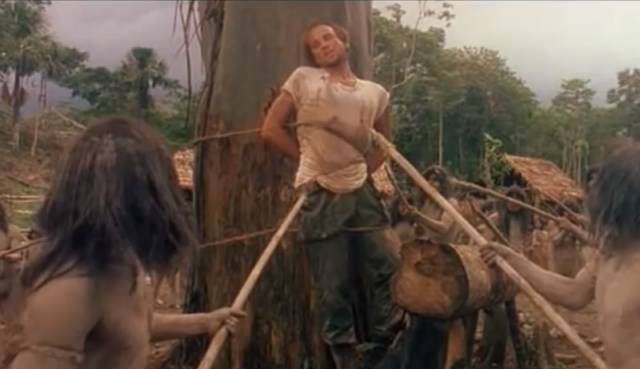
To a viewer today, used to graphic displays of gore, but perhaps more “enlightened”, the elements of racism and misogyny are more troubling than the violence itself … except in the case of the all-too-real violence to animals which is one of the distinguishing characteristics of the genre. In an interview on the Cannibal Holocaust disk, Deodato says that such imagery was added to Last Cannibal World by the producer against his wishes, because Asian audiences supposedly liked to see it. When more of the same was demanded for Cannibal Holocaust, he says, he tried to minimize the gratuitousness by tying the actual killing of animals to their use as food. In Cannibal Ferox, the animal violence remains completely gratuitous – Lenzi lingers interminably on a small animal being crushed to death by an anaconda, screaming desperately in a voice filled with terror. I can’t imagine any audience actually finding this entertaining, and this aspect perhaps more than the human mayhem gives the genre its lingering air of disreputability.
*
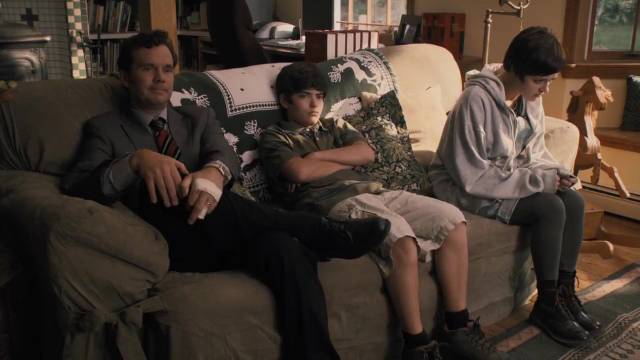
American Cannibals
If Italian cannibal movies depict a clash of incompatible cultures, American cannibal movies tend to depict violent conflict between families. There are the kids (including a brother and sister) who run afoul of that Texas family in Tobe Hooper’s influential 1974 movie; there are the middle class Carters who find themselves being hunted by a dark mirror family of mutants in Wes Craven’s The Hills Have Eyes (1977). The latter was at least partially inspired by the Scottish clan led by Sawney Bean in the 16th Century, which preyed on travellers, reputedly killing and sometimes eating more than a thousand people in twenty-five years.
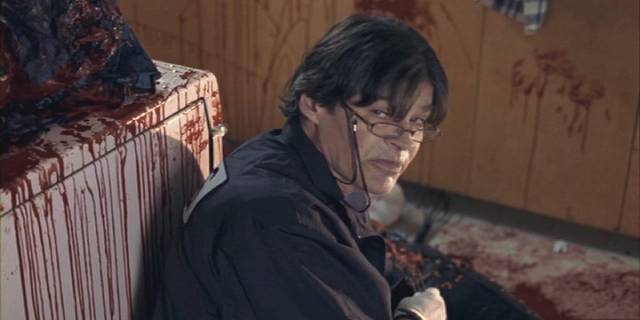
Offspring (Andrew van den Houten, 2009)
Sawney Bean and his kin also inspired writer Jack Ketchum, whose first novel, Off Season (1981), had a cannibal family preying on people along the Maine coast. Ten years later, he wrote a sequel and eighteen years after that was published, it was adapted into a low budget horror movie called Offspring (2009), scripted by Ketchum himself and directed by Andrew van den Houten. A group of animalistic outcasts (they communicate with grunts rather than speech) are hanging out in a cave on the coast, raiding remote homes in the area and carrying off body parts for supper. They’re particularly interested in babies, perhaps because they’re tasty, perhaps to replenish their numbers … although they keep a man in chains whose sole function is apparently to impregnate the women.
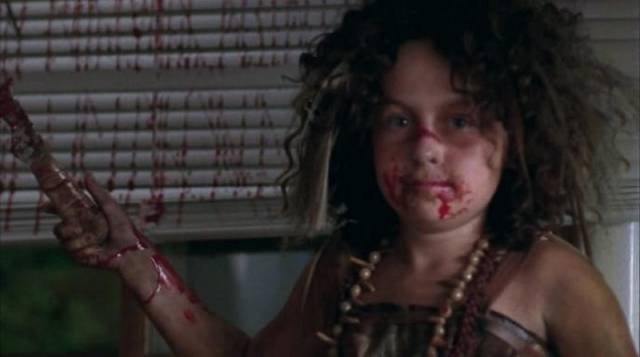
When mutilated bodies start turning up, the local cops call on retired semi-drunk George Chandler (Art Hindle) who dealt (unsuccessfully) with a similar case ten years earlier (a reference back to Off Season, which has not been adapted into a movie). Chandler isn’t actually terribly helpful when the clan attack the Halbard family, killing the dad (Andrew Elvis Miller). Wife Amy (Amy Hargreaves) manages to get away with their baby, whom she entrusts to the young son (Tommy Nelson) of her friend Claire (Ahna Tessler). The action takes place over one night with the cannibals gradually picking off family members and cops.
There’s a subplot involving Claire’s husband Stephen (Erick Kastel), a misogynistic abuser who follows Claire to the Halbards to deal in his own way with her attempt to divorce him. Along the way, he picks up a teenage hitchhiker and tries to molest her … this sets up a contrast between two kinds of human monster which will become more significant in the sequel.
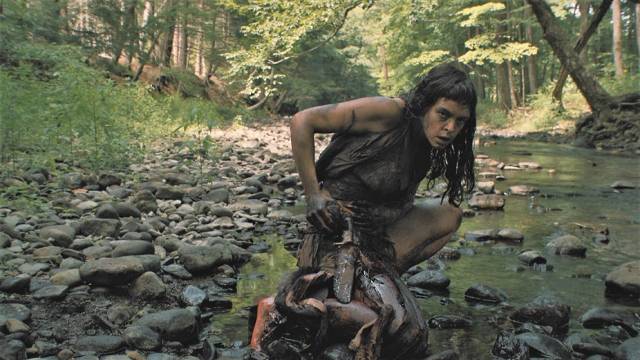
The Woman (Lucky McKee, 2011)
Rough around the edges, Offspring is a gritty, graphic little horror movie with echoes of The Hills Have Eyes, although it doesn’t waste any time on thematic nuance. Van den Houten keeps it brisk, building suspense and lingering on queasy moments. Perhaps the most notable thing about the movie is that a peripheral character inspired a much more ambitious sequel. Filmmaker Lucky McKee was intrigued by one of the cannibals, designated simply “the Woman”, played by Scottish actor Pollyanna McIntosh, and he collaborated with Ketchum in the simultaneous writing of a screenplay and novel with this character at the centre of a story which displaces cannibalism in favour of something even more horrific.
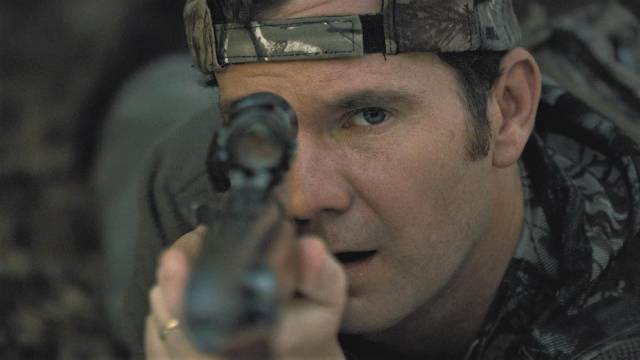
For some reason, I haven’t seen any of McKee’s other work, though I’ve been aware of his acclaimed debut feature May (2002) for a long time. If The Woman (2011) is anything to go by, I should check out the rest of his features, though they appear to be an uneven bunch. (I’m waiting for the arrival of the German Blu-ray edition of May which I recently ordered from an Amazon seller.) This particular film is tonally complex and deeply unsettling, a mix of very black humour and visceral horror. Although it has the feral woman at its centre, a brooding, inscrutable creature who has survived by killing and eating people, the actual monster is a smiling, all-American suburban dad, lawyer Chris Cleek (Sean Bridgers), who lives with his family on an old farm which is isolated enough to provide the privacy he needs to rule over his wife Belle (Angela Bettis), his son Brian (Zach Rand), and two daughters, Peggy (Lauren Ashley Carter) and Darlin’ (Shyla Molhusen).
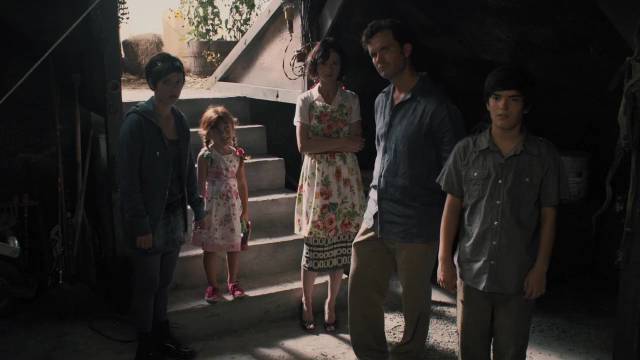
It all looks picture perfect, but there’s something immediately apparent behind Chris’ perpetual smile, something in his eyes which tells you he’s performing for his clients and neighbours. We soon discover that he’s even more of a monster than Terry O’Quinn’s Jerry Blake in Joseph Ruben’s The Stepfather (1987). While he cheats his clients at work, he terrorizes his wife and older daughter at home, deliberately modelling the worst kind of misogynist arrogance for son Brian. Belle, trapped, does everything she can to accommodate his demands even as she can see Brian becoming a monster like his dad and can’t avoid the spectre of potential if not yet actual sexual abuse of Peggy. So far, so familiar – McKee quickly sketches in this portrait of domesticity rotten to its core, a family in thrall to the epitome of toxic masculinity.
But then early one morning, Chris is out in the woods behind the property when he sights the Woman (McIntosh) … literally, through the scope on his hunting rifle, immediately establishing a particular power relationship defined by the potential for deadly violence. Having escaped the carnage at the end of Offspring, the Woman is wounded, bloody and coated with grime. Chris sees her standing in a river, washing off the filth, and is obviously aroused – a wild, untamed animal, this is the kind of woman who fits into his world view.
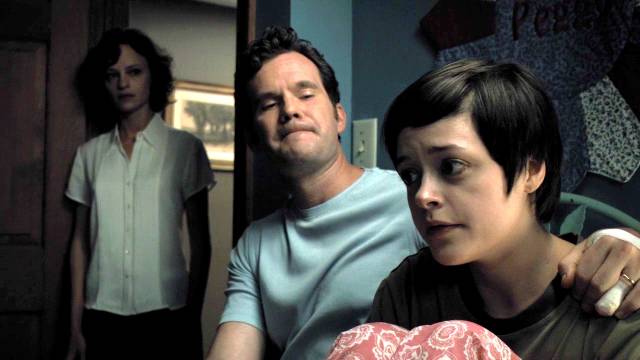
Having managed to capture her, he chains her in a cellar on his property. This suggests a familiar torture porn trope – something which doesn’t entirely go away – but the movie immediately takes an unexpected turn. Chris excitedly gathers the family together to introduce them to his new “project”: they’re all going to join in “civilizing” the Woman. This begins with him turning a high pressure hose on her to wash off the filth; Peggy finally objects to the brutality, arousing Chris’ anger. Later, with the Woman again chained in the cellar, Chris rapes her as Brian spies on them through a crack in the door. Excited, Brian, still too inexperienced to imitate his dad exactly, tortures the Woman… Horrified, Belle and Peggy believe Brian needs to be punished, but Chris rebukes them instead because what Brian did is only natural for a man.
More horrors are exposed – there’s something in the barn which is both viscerally disturbing and pointedly metaphoric – but in his arrogance, Chris has missed something very important: he can’t see the power embodied in the Woman, nor its effect on Peggy who gains the will finally to oppose him. King of his little domain, a despot terrorizing his captive subjects, it turns out his power is illusory, sustained only because he has managed to convince his victims that it’s real. When countered by an opposite, and stronger, power, his world quickly collapses.
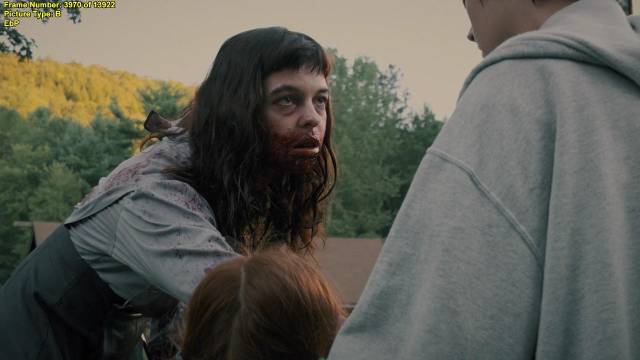
McKee treads a tricky path with the sexualized violence, the disturbing displays of misogyny, the torture porn tropes which are countered at the end when the tide turns against Chris … but that belated burst of revenge might have come across as a mere genre cliche used to take the sting out of what we’ve been watching if not for one thing: Pollyanna McIntosh.
As the Woman, even without language, she dominates the film, the physical embodiment of everything Chris believes he has power over and yet, even chained in his cellar, beyond his control. McIntosh expresses through her body and particularly her eyes a total awareness of his vulnerability, the weakness which lies beneath his violence; the Woman, for all that she’s subjected to, refuses victimhood and passes her power on to Peggy, giving the lie to all that arrogant masculine posturing. When she finally bites down on Chris, you find yourself enthusiastically rooting for the cannibal.
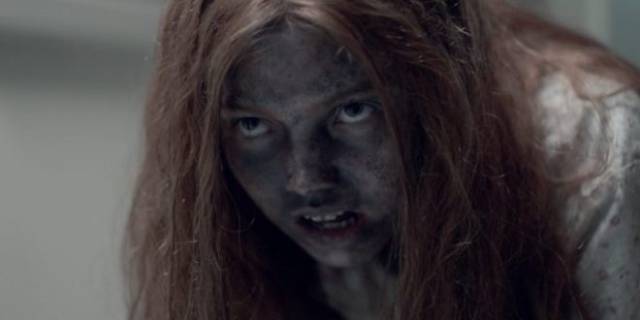
Darlin’ (Pollyanna McIntosh, 2019)
The Woman has an open ending and eight years after its release a sequel appeared. Darlin’ (2019), produced by Andrew van den Houten and executive produced by Lucky McKee and Jack Ketchum, was written and directed by Pollyanna McIntintosh, who also reprised her now somewhat iconic character. However, although she plays a key part in the story, the Woman is not the central figure. That role goes to Darlin’, the now-teenage youngest daughter of the Cleek family, who has in the meantime been living the feral cannibal life with the Woman. As the movie begins, the Woman delivers Darlin’ (Lauryn Canny) to a hospital – we only discover later just why – and from then on watches from the periphery.
Darlin’ is frightened and aggressive, but finds an empathetic ally in Tony (Cooper Andrews), a gay nurse who immediately recognizes a fellow outsider and tries to gain her trust before an obnoxious doctor drugs her and ties her down contemptuously. The film’s central theme of damaged and socially unacceptable people standing against institutional powers determined to tame and contain them is quickly established. Although a tentative bond is formed between Tony and Darlin’, he has no real authority; the hospital is run by the Catholic church and the Bishop (Bryan Batt) sees the girl as a money-maker in a time when the battered Church is losing income because of its declining reputation.
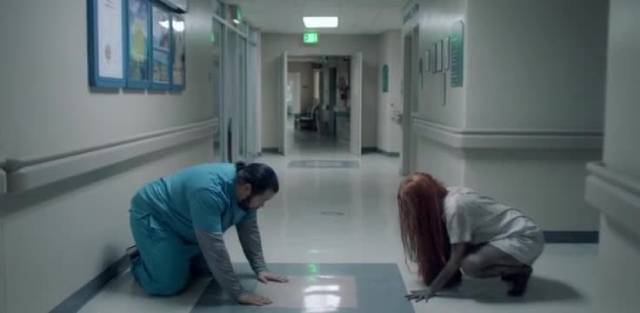
Darlin’ is sent off to a girls’ orphanage to be “civilized” under the guidance of a young nun, Sister Jennifer (Nora-Jane Noone), herself a former inmate. In order to cash in on the positive transformative effects of the Church, the Bishop initially provokes violent feral behaviour from Darlin’ so he can record a “before” to contrast with what will no doubt be an uplifting “after”, in the process undermining any possibility of trust. It doesn’t help that authoritarian Sister Grace (Geraldine Singer) has absolutely no understanding of Darlin’s nature and tries to use her standard methods on her – demanding that she read from the Bible even though she can neither read nor speak, and threatening to beat her when she won’t comply.
Among the girls, only the rebellious Billy (Maddie Nichols), who sneaks off to smoke dope in the woods and listen to forbidden music on her headphones, befriends Darlin’ because she recognizes a kindred spirit, while Tony visits to offer support although he’s viewed with distaste by his Catholic employers. Meanwhile, the Woman searches for Darlin’ who has disappeared from the hospital, killing (and occasionally chewing on) a number of people along the way. She eventually joins a small community of homeless women who bear a close resemblance to her except for the eating people part.
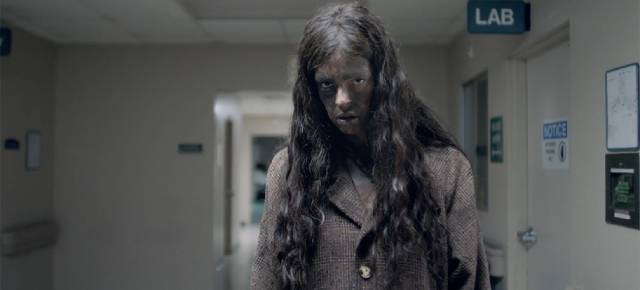
We finally discover why the Woman took Darlin’ to the hospital in the first place when the Bishop gets around to attempting to molest her, as he apparently has done to many of the girls (including Jennifer when she was an inmate) – his theory is that girls who are prone to sin are better off being introduced to that sin by a devout man of God. When he gets Darlin’ to strip in front of him, the removal of her loose-fitting uniform reveals that she’s pregnant … and a flashback shows us the fate of her sister Peggy (Lauren Ashley Carter) who died giving birth in the woods. The Woman took her to the hospital hoping to spare her that fate.
Disgusted that the girl is already spoiled, the Bishop loses sexual interest in her, but still hopes to cash in from the fact that she is now apparently civilized – clean, speaking articulately, able to recite the Catechism. He invites the press along with the Cardinal to witness her first communion. It all goes wrong, needless to say, when Darlin’ bypasses the symbolic flesh of the wafer to take a bite of literal flesh from the Bishop’s hand and Sister Jennifer publicly denounces his predatory sexual abuse of the girls at the orphanage … just as the Woman and her homeless companions burst into the church and Darlin’ goes into labour.
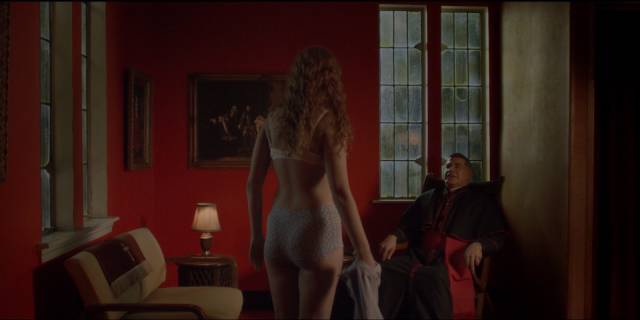
The climax of Darlin’ has the corrupt order of the Church collapsing from its own inner rot as well as an assault from the unruly forces of female sexuality and the outsiders who refuse to be contained by the institution’s rules. The violence visited on that institution is loaded with irony; while its rituals are centred on symbolic cannibalism – the eating of Christ’s flesh – its corrupt leaders are brought down by an aggressively secular cannibal.
Not surprisingly, one of Darlin’s strengths is the performances of a talented cast. As an actress herself, director McIntosh draws excellent work from everyone, particularly Lauryn Canny as Darlin’ and Maddy Nichols as Billy, with strong support from Cooper Andrews and Nora-Jane Noone as the girl’s chief allies. Bryan Batt and Geraldine Singer may be more overtly caricatured as the representatives of a corrupt Church, but their performances are nonetheless effective. Darlin’ is a strong continuation of an evolving narrative in which cannibalism has come to stand as a visceral counterpoint to the more damaging behaviours contained within and supported by social institutions which maintain the illegitimate power of toxic men.
*
The two Italian films come in deluxe three-disk sets from Grindhouse Releasing, each with two extras-loaded Blu-rays plus soundtrack CD, while Offspring and The Woman have been given 4K restorations in a two-disk set from Arrow, with commentaries, making-of documentaries and various other featurettes. The shot-on-digital Darlin’ gets a strong presentation on Dark Sky’s Blu-ray, with a commentary from McIntosh, a behind-the-scenes featurette and a brief deleted scene.
Comments